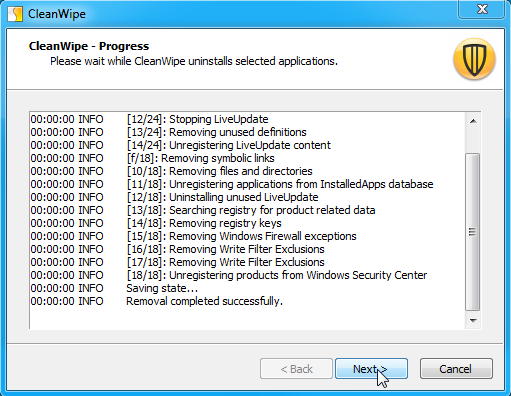
Invoke-Command -Session $session -ScriptBlock īy adding in a semicolon we can of course add a second line to our ScriptBlock and make the process a little more automated. The challenge i had was that on several clients it seemed Symantec had a different IdentifyingNumber (IN), which is the GUID used by Windows to identify the product.Īs there were only 7 client machines i did a lot more of this manually than perhaps i needed to.įirstly i found the right IdentifyingNumbe r from each PC. If you have tamper protection, or password protected uninstall, you need to use SEPM to remove those options FIRST. I already had the machines on the network configured for PowerShell Remoting, so connecting to them was not a challenge. Uninstall () If successful/found/removed, it drops a message you can parse for ReturnValue:0 You’ll need to reboot the thing afterwards. There are various ways of course to execute a command on a remote machine, you can use PSTools’, PSExec for example, but i prefer to use PowerShell where i can. I did a lot of searching around for a reliable solution, most of which came back to using MSIEXEC from a command line. It was a small SEPM deployment, only 7 clients and a server but i was surprised to be reminded that SEPM has no ‘uninstall’ tool from their console. When prompted, please restart the computer.Finally moving my last client from Symantec SEPM to Trend Micros WFBS Hosted platform. You will then be prompted to uninstall Symantec Endpoint Protection.After a moment you will see another notification in the upper right indicating that you will need to restart.Please enter your administrative credentials and click “OK” to continue. How To Uninstall Symantec Endpoint Protection.In this video, I have shown how to uninstall Symantec Endpoint Protection using the CleanWipe uninstall utility.

You will then be prompted for administrative credentials.You should then see a prompt to continue removing Symantec system extensions.You may then be prompted to allow JAMF access to control Finder.You will see a notification in the upper right that the script is about to run.Once you are alerted that the script is about to begin, please save any work as the system will need to restart once the script is complete. While we have a script to remove the old Symantec client software, it will prompt you for several things and will ask you for administrative credentials before it will proceed.īelow are the screens and steps that you will see when the removal script is pushed to your Mac. You were likely directed to this page because you have a Mac and you have an account on that Mac with administrative permissions. Part of this project is the removal of the old Symantec Endpoint Protection client software. The new product offers many benefits over the old product, including the ability to monitor and manage protection for systems while off campus.


UMW is currently migrating its antivirus and antimalware protection from Symantec Endpoint Protection to Sentinel One.


 0 kommentar(er)
0 kommentar(er)
